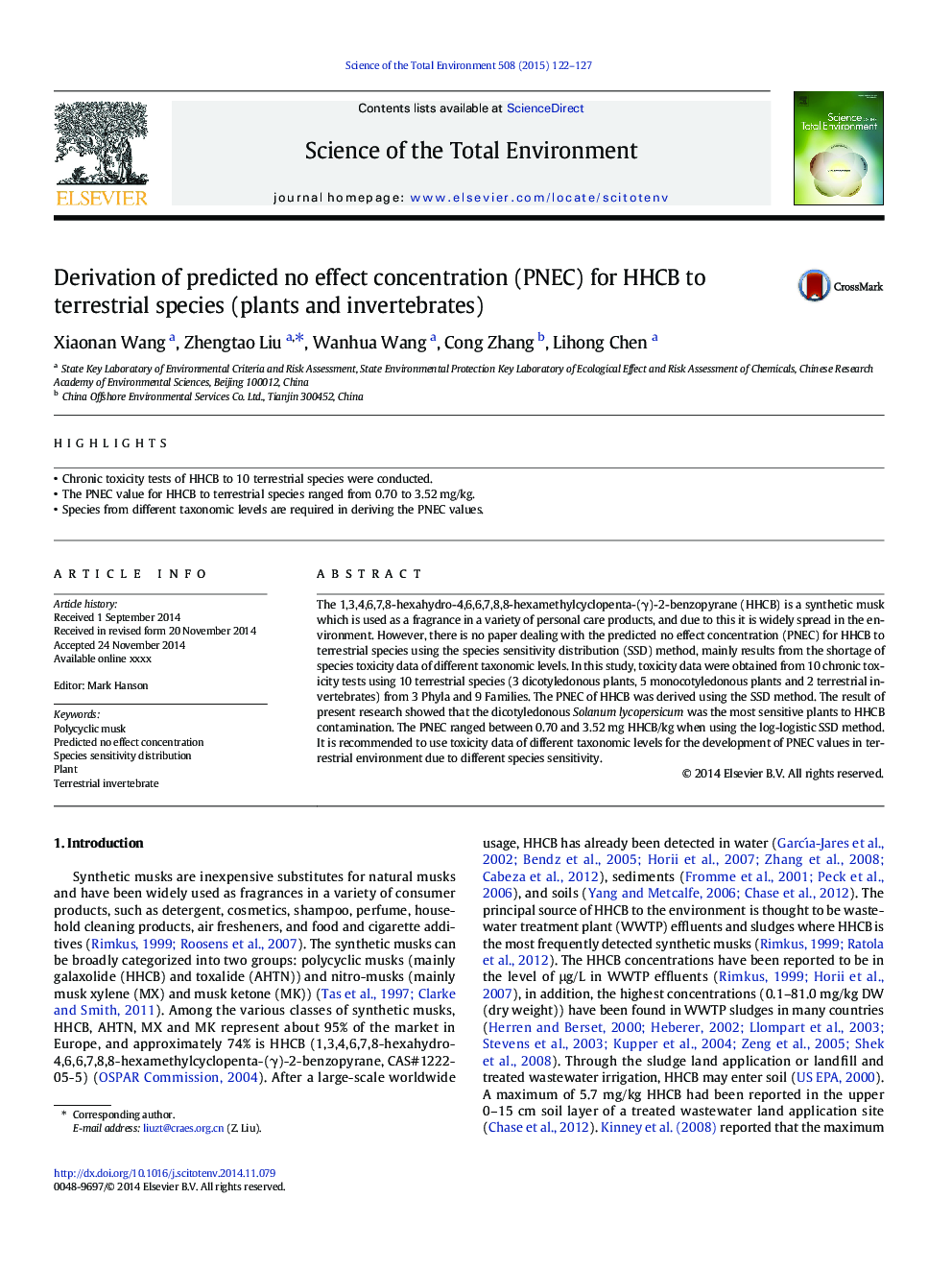| Article ID | Journal | Published Year | Pages | File Type |
|---|---|---|---|---|
| 6327843 | Science of The Total Environment | 2015 | 6 Pages |
Abstract
The 1,3,4,6,7,8-hexahydro-4,6,6,7,8,8-hexamethylcyclopenta-(γ)-2-benzopyrane (HHCB) is a synthetic musk which is used as a fragrance in a variety of personal care products, and due to this it is widely spread in the environment. However, there is no paper dealing with the predicted no effect concentration (PNEC) for HHCB to terrestrial species using the species sensitivity distribution (SSD) method, mainly results from the shortage of species toxicity data of different taxonomic levels. In this study, toxicity data were obtained from 10 chronic toxicity tests using 10 terrestrial species (3 dicotyledonous plants, 5 monocotyledonous plants and 2 terrestrial invertebrates) from 3 Phyla and 9 Families. The PNEC of HHCB was derived using the SSD method. The result of present research showed that the dicotyledonous Solanum lycopersicum was the most sensitive plants to HHCB contamination. The PNEC ranged between 0.70 and 3.52 mg HHCB/kg when using the log-logistic SSD method. It is recommended to use toxicity data of different taxonomic levels for the development of PNEC values in terrestrial environment due to different species sensitivity.
Related Topics
Life Sciences
Environmental Science
Environmental Chemistry
Authors
Xiaonan Wang, Zhengtao Liu, Wanhua Wang, Cong Zhang, Lihong Chen,
